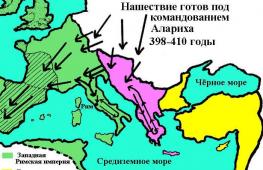Fushakov Baltic Naval Institute. Military Educational and Scientific Center of the Navy "Naval Academy named after
For more than six and a half decades, an outpost of naval education and military science in the Kaliningrad region there remains a branch of the VUNC of the Navy "Naval Academy". Its history begins in 1947, when the Baku Naval Preparatory School (BVMPU) was relocated to Kaliningrad.
In August 1948, by a decree of the Soviet government, the 2nd Baltic Higher Naval School was created on its basis. The first release of officers was made in 1952.
In connection with the development of the ocean-going nuclear missile fleet in 1967, a branch of the Higher naval school them. M.V. Frunze. Two faculties were created: navigational and artillery. On April 7, 1969, a branch of the VVMOLKU named after. MV Frunze is transformed into the Kaliningrad Higher Naval School.
In 1993, in connection with the transfer of the Black Sea VVMU under the jurisdiction of Ukraine, the school formed (transferred) the faculty of armament of surface ships, later transformed into the faculty of missile armament of surface ships.
In 1998, the Kaliningrad VVMU was transformed into the Baltic Naval Institute. In 2002, he was given an honorary name - the name of Admiral F.F. Ushakov. The Institute gave a start in life to more than tens of thousands of naval officers, many of whom became admirals, fleet commanders, commanders of formations and formations, units, ships, flagship specialists, scientists, public figures, specialists of the domestic industry and major leaders.
In 1999, a school of technicians was formed at the institute. Completed in August 2001, an experiment on the training of midshipmen with an average vocational education was considered successful. According to its results, since July 1, 2002, schools of technicians have been created in all naval institutes, with the simultaneous disbanding of the existing schools of technicians at the training detachments of the Navy. With the formation in 2009 of the VUNTS of the Navy "Naval Academy" in five of its branches - naval institutes - faculties of secondary vocational education were created, where for two years and 10 months in 24 military specialties they train foremen of contract service with secondary military special training.
In the process of training, cadets annually undergo training practice on ships with visits to foreign ports.
The branch of the VUNC of the Navy "Naval Academy" (Kaliningrad) carries out its activities in close cooperation with the command of the Baltic Fleet. The potential of VVMUZ allows for fruitful research work. Scientific schools: according to the tactics of the Navy; on military training, combat training; training of communication specialists; on military history.
The branch of the VUNC of the Navy "Naval Academy" (Kaliningrad) occupies a leading position in the training of specialists in radio communications and rocket and artillery weapons of surface ships.
1947 - The Baku Naval School was relocated to Kaliningrad. After a series of transformations and reorganizations, the Kaliningrad Higher Naval School was established in 1969. Since 1998 - Baltic Naval Institute, in 2002 named after F.F. Ushakov, since 2009 - Branch of the VUNC of the Navy "VMA named after Admiral Fleet Soviet Union N. G. Kuznetsova.
Faculties:
- radio communications, artillery and anti-aircraft weapons of surface ships,
- secondary military special training,
- retraining and advanced training.
Form of study- full-time.
The duration of the program higher education with the assignment of the military rank of "lieutenant" - 5 years.
The term of study under the program of secondary prof. education with the assignment of the military rank of "midshipman" - 2 years 10 months.
Admission rules:
Citizens of the Russian Federation at the age of 16-22 years old who have not completed military service, in / employees and transferred to the reserve - up to 24 years old are allowed to enter. Submission of an application - to the military registration and enlistment office at the place of residence (for military personnel - a report on command) before March 1 of the year of receipt.
Entry conditions:
- passing medical commission to determine fitness for health reasons,
- passing a professional selection with the definition of a category,
- exam in physical training,
- USE results in mathematics, physics, Russian language not lower than min. level set for images. higher education organizations,
- the results of the Unified State Examination in mathematics and the Russian language are not lower than the minimum level established for images. organizations of secondary prof. education.
Contacts:
Address: Sovetsky pr-t, 82
Tel. 935-210, fax 215-478
[email protected]
For more than six and a half decades, the branch of the VUNC of the Navy "Naval Academy" has remained an outpost of naval education and military science in the Kaliningrad region. Its history begins in 1947, when the Baku Naval Preparatory School (BVMPU) was relocated to Kaliningrad.
In August 1948, by a decree of the Soviet government, the 2nd Baltic Higher Naval School was created on its basis. The first release of officers was made in 1952.
In connection with the development of the ocean-going nuclear missile fleet in 1967, a branch of the Higher Naval School named after V.I. M.V. Frunze. Two faculties were created: navigational and artillery. On April 7, 1969, a branch of the VVMOLKU named after. MV Frunze is transformed into the Kaliningrad Higher Naval School.
In 1993, in connection with the transfer of the Black Sea VVMU under the jurisdiction of Ukraine, the school formed (transferred) the faculty of armament of surface ships, later transformed into the faculty of missile armament of surface ships.
In 1998, the Kaliningrad VVMU was transformed into the Baltic Naval Institute. In 2002, he was given an honorary name - the name of Admiral F.F. Ushakov. The Institute gave a start in life to more than tens of thousands of naval officers, many of whom became admirals, fleet commanders, commanders of formations and formations, units, ships, flagship specialists, scientists, public figures, domestic industry specialists and major leaders.
In 1999, a school of technicians was formed at the institute. Completed in August 2001, the experiment on the training of midshipmen with a secondary vocational education was recognized as a success. According to its results, since July 1, 2002, schools of technicians have been created in all naval institutes, with the simultaneous disbanding of the existing schools of technicians at the training detachments of the Navy. With the formation in 2009 of the VUNTS of the Navy "Naval Academy" in five of its branches - naval institutes - faculties of secondary vocational education were created, where for two years and 10 months in 24 military specialties they train foremen of contract service with secondary military special training.
In the process of training, cadets annually undergo training practice on ships with visits to foreign ports.
The branch of the VUNC of the Navy "Naval Academy" (Kaliningrad) carries out its activities in close cooperation with the command of the Baltic Fleet. The potential of VVMUZ allows for fruitful research work. Scientific schools: on the tactics of the Navy; on military training, combat training; training of communication specialists; on military history.
The branch of the VUNC of the Navy "Naval Academy" (Kaliningrad) occupies a leading position in the training of specialists in radio communications and rocket and artillery weapons of surface ships.
Encyclopedic YouTube
1 / 3
✪ BVMI named after F.F. Ushakov (Kaliningrad)
✪ for release bwmi.wmv
✪ 40 years of BVMI
Subtitles
History
background
The scientific school of the university includes four areas that have received recognition both inside and outside the institution:
- On the issues of applied electrodynamics (supervisor - Honored Worker of Science of the Russian Federation, Academician, Doctor of Technical Sciences, Professor Ivan Fedorovich Pisarevsky),
- On Problems of Naval Tactics and International Maritime Law (Honored Worker high school Russian Federation, Doctor of Military Sciences, Professor Vitaly Vasilyevich Smyshnikov),
- On military history (Honored Worker of the Higher School of the Russian Federation, Doctor of Military Sciences, Professor Boris Mikhailovich Amusin).
- Combat training (Doctor of Military Sciences, Professor Sopin Yuri Grigorievich).
By the decision of the general academic meeting of May 12, 2000, the Kaliningrad Regional Branch of the Academy of Military Historical Sciences was formed on the basis of the BVMI.
BVMI trains officers and petty officers for the Russian Navy and power structures at three faculties in three specialties of higher professional military education (qualification "naval engineer", "engineer"):
- Ship automated complexes and information and control systems,
- Means of communication with mobile objects,
- Radio engineering.
In addition, at one faculty in three specialties (8 specializations) they train specialists with a secondary vocational education (qualification "technician"):
- Electronic appliances and devices,
- Radio communication, broadcasting and television,
- Automatic control systems.
The term of study at all faculties of the institute is 5 years, at the faculty of the school of technicians - 2 years and 10 months. At the same time, due to the reduction in the needs of the Russian Navy for officers, associated with the transition of the Russian Armed Forces to a “new look”, the number of cadets of the Institute has decreased significantly. In 2010 - Hero of the Russian Federation



